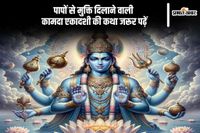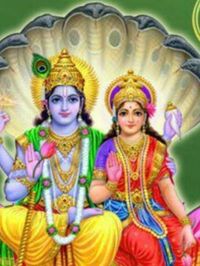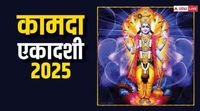Kamada Ekadashi 2025: A Time for Reflection and Devotion
On April 8, 2025, Hindus across the world will observe Kamada Ekadashi, a significant day dedicated to Lord Vishnu, marking the first Ekadashi of the Hindu New Year. This auspicious day is believed to bestow the grace of Shrihari, fulfilling the wishes of those who participate in the fast and rituals associated with it.
Kamada Ekadashi falls on the 11th day of the Shukla Paksha (waxing phase of the moon) in the month of Chaitra. This year, devotees will partake in the fast on a Tuesday, a day that also coincides with Ravi Yoga and Sarvartha Siddhi Yoga, two highly regarded auspicious yogas in Hindu astrology.
The Brahma Muhurta for worship will be from 4:32 AM to 5:18 AM, while the Abhijeet Muhurta, another significant time for rituals, will be from 11:58 AM to 12:48 PM. The fast can be broken on the following day, April 9, 2025, until 10:55 AM. Observing this fast is believed to cleanse one of sins and fulfill desires.
The significance of Kamada Ekadashi is deeply rooted in Hindu mythology, particularly in the story of Lalit and Lalita, which illustrates the power of devotion and the importance of this sacred day. According to the tale narrated in the Vishnu Purana, King Pundarik ruled over the prosperous city of Bhogipur, where Lalit, a talented singer, and his beloved, Lalita, resided.
During a performance in the royal court, Lalit became distracted by his wife's beauty, causing him to falter in his singing. This mistake enraged King Pundarik, who, in a fit of anger, cursed Lalit to become a Rakshasa (demon), transforming him into a monstrous figure whose body stretched for eight yojanas.
Devastated by her husband's fate, Lalita sought the guidance of Shringi Rishi. Upon hearing her plight, the sage instructed her to observe the fast of Kamada Ekadashi and to dedicate its merits to Lalit. Following the sage's advice, Lalita performed the fast with devotion, and upon its completion, she offered the resulting spiritual merit to her husband. Miraculously, Lalit was freed from his demonic form and restored to his original self, allowing the couple to live happily ever after and attain a place in Swarga Loka (heaven) after their deaths.
This story serves as a reminder of the transformative power of faith and the importance of observing Kamada Ekadashi. Devotees believe that by participating in this fast, they not only cleanse themselves of past sins—whether committed knowingly or unknowingly—but also gain immense spiritual benefits. The fast is said to yield results comparable to that of performing a Vajpayee Yagya, a significant Vedic ritual.
In preparation for the fast, devotees are encouraged to rise early, bathe, and wear clean clothes, symbolizing the purification of the body and mind. The day is often spent in prayer, with many reciting specific mantras dedicated to Lord Vishnu, including "Om Namo Bhagavate Vasudevaya." Lighting a lamp in front of an image or idol of Vishnu, especially with Tulsi leaves, is also a customary practice.
Night vigils and singing bhajans (devotional songs) dedicated to Lord Vishnu are highly encouraged, as they are believed to enhance the spiritual merit of the fast. After the conclusion of the fast, it is customary to feed Brahmins and those in need, further amplifying the spiritual benefits accrued during the observance.
As Kamada Ekadashi approaches, many reflect on their desires and aspirations, seeking the blessings of Lord Vishnu to achieve personal and spiritual goals. The day is not only about fasting and rituals but also about fostering a sense of community and sharing blessings with others.
In summary, Kamada Ekadashi is a deeply revered occasion in Hinduism, embodying the principles of devotion, sacrifice, and the pursuit of spiritual fulfillment. As devotees prepare to observe this sacred day, they are reminded of the significance of their actions and the profound impact of faith in their lives.
The rituals and stories associated with Kamada Ekadashi continue to inspire millions, serving as a testament to the enduring power of belief and the sacred traditions of Sanatan Dharma.








